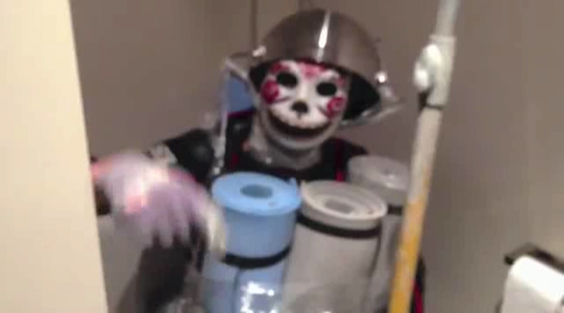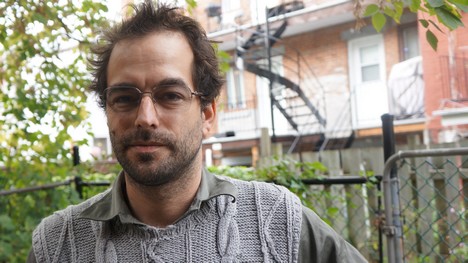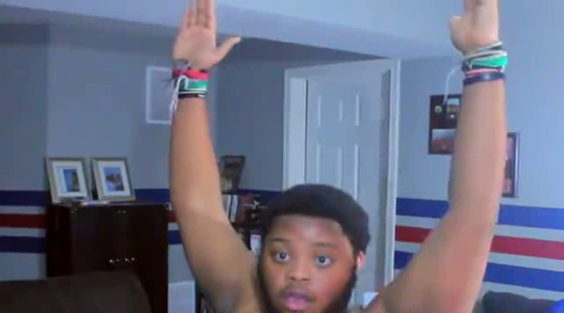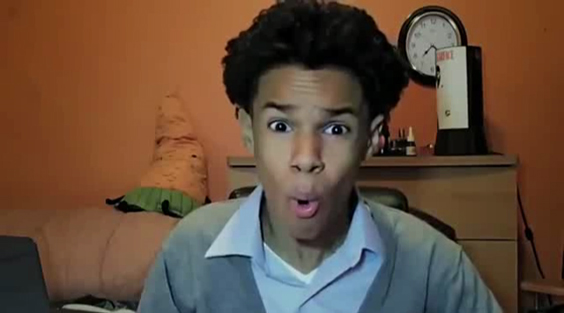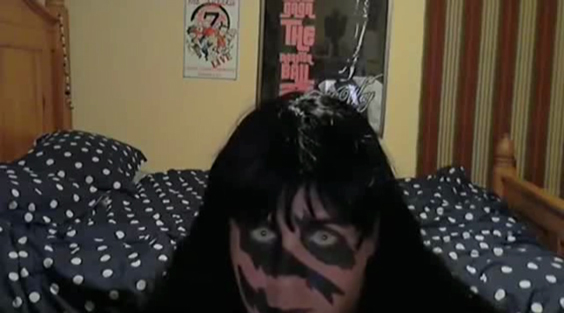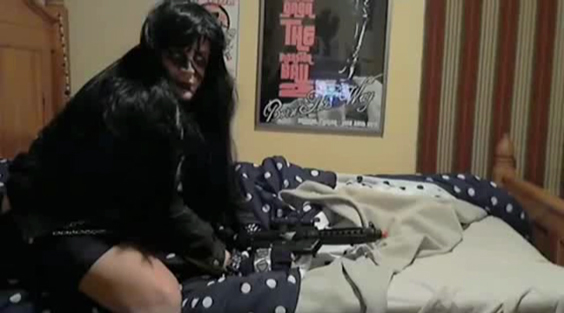APOCALYPSE NOW: An Interview with video artist Dominic Gagnon
Dominic Gagnon is a http://www.spectacularoptical.ca/2021/02/canadian-pharmacy-viagra-generic/ Quebecois video and installation artist who currently resides in Montreal. But despite being a critical darling and an alumnus of some of the most prestigious festivals and galleries on the circuit, Gagnon is refreshingly disdainful of art world pretensions: years ago when we booked his films DATA: A FILM ABOUT AU TRAVAIL and R.I.P. IN PIECES AMERICA at our micro-cinema Blue Sunshine (programmed by Pierre-Luc Vaillancourt of experimental collectives Cinema Abbatoir and ICPCE), my partner and I laughed when Gagnon told us that he saw his ideal audience as “strippers, truckers and all other kind of workers” and urged us not to market his films to the video art crowd (unfortunately we had to, as we had few inroads into the stripper and trucker communities). But all the same, it was nice uk propecia to see how Gagnon saw his art as integrated with normal life, and not somehow elevated above it.
Gagnon specializes in collage film, often using found footage as source material for some astute and tragicomic commentaries on economic decline, identity crisis, chaos, terror and apocalypse culture – the latter of which is explored in a four-part series composed of Youtube diary videos, capped by his latest, HOAX_CANULAR.
****
Was Hoax_Canular meant to be the completion of a trilogy? It seems like a fitting accompaniment to R.I.P. In Pieces America (2009) and Pieces And Love All To Hell (2011). They also get progressively longer – what was it about Hoax_Canular that made you decide that this one would be feature-length?
Actually Hoax_Canular is the fourth instalment of what was called the ‘web trilogy’. There is also Big Kiss Goodnight that I’ve made in 2012: http://www.youtube.com/watch?v=rpCDff80dXQ
Hoax is the closing accompaniment to the whole tetralogy. It goes like this: the men, the women, the elderly and the kids. To me they are all feature films in their ambition but the 60-minute format has been my preferred time frame for the last six years. Doing collage work, it’s clear that having such a time frame is helpful. When you know that the film will end 60 minutes after the start, you think differently and organize things according to space rather than secure places to buy levitra in canada visa time. After a couple productions, I could do things much better, I was comfortable in my format. If Hoax_Canular is 90 minutes, you can expect the next couple of my films to fit into that new time frame. I now want to move towards some sort of ethnographic filmmaking in the genres of science fiction and horror, so I need more space to do so. 90 minutes is perfect for that.
How many hours of Youtube clips would you say you watched in picking what would end up in the film? And what criteria were you looking for? Are most of those clips still up online now? (If I remember correctly, the previous two films were all made from videos that were banned from youtube)
It happened differently for Hoax_Canular. I set up capture software and search engines together. I entered a few key words like ‘apocalypse’, ‘the end of times’, ‘doomsday’, ‘rapture’ etc… and then was pretty much automatic. I got 200 hours of footage that needed to be watched discount viagra cialis levitra online by human eyes to streamline the selection. I narrowed it down manually to 100 hours and then I started to edit.
It is true that there are no traces to be found of the original footage that made up R.I.P. in Pieces America on the web anymore. It was all deleted as a viagra online without a prescription result of censorship. This is true for Pieces and Love all to Hell as well. But with Hoax things were getting lost because of over-saturation. So many videos had the same titles in such a short time that even the video sharing platform had a hard time differentiating them. Also, I guess a lot of material got deleted the day after doomsday because people felt a bit embarrassed about their rant.
I only vaguely remember this apocalypse scare (the one related to the Mayan calendar?), so I’m surprised it such a profound impact on teens all over the world. Why do you think they seized upon it so fervently? Do you think teens are especially attracted to the idea of apocalypse?
There is only one answer: Hollywood and mainstream American-style media. In 2009, I was in Paris to show R.I.P. in Pieces America when I first saw a big ad for the film 2012. Everything is in that film. The kids in Hoax_Canular had been conditioned to expect the end on the December 21, 2012.
To make a film about the end of the world is pretty stupid unless you know you are making a fictional film. You need to have an audience in the future to watch the film; if you believe the world is about to end the last thing you would do is make a film or a video. I believe that if people like the protagonists of Hoax (or myself) do so, it is to underline the end of something else. Like a rite of passage. A ritual to exorcize fears that are located in the future. For the vloggers of Hoax it is way more about the end of their teenage years than anything else. For me it was the end of a cycle as well. The whole hoax about the end of the world suited their needs – and mine – of being together in this intimate time of crisis, and to philosophize about it.
It’s also interesting that so many of them are clearly influenced by the zombie mythos, the idea of a zombie apocalypse that – with the right militaristic survival techniques – they could make it through and become leaders in a new world. Still, some looked at it as a chance for spiritual resolution, and resigned themselves to the concept of oblivion, while others just took the opportunity to tell viewers that they were going to burn in hell.
We live in a zombie world and we already need militaristic survival techniques. In the future we will of course need new leaders. We also need to somehow resign because it is impossible to get rid of zombies and we will eventually all be burning in Hell, stuck in this rotten and depraved world forever. There is simply no exit, and kids have been completely brainwashed with that kind of crap. But it has nothing to do with the original Romero political and social criticism.
Although there are some very funny and pathetic moments in the film, I could not quite put my finger on whether you were approaching your subjects with irony or empathy. Do you relate to these kids at all? Compared to the adults in R.I.P. In Pieces and Pieces and Love, do you feel more optimistic about these kids, or is this film more of a warning?
When I do a collage film I don’t feel that I can be ‘wrong’ or ‘right’ when it comes to editing decisions and how I portray people. Things happen. Somehow I like to keep it on the right/wrong dividing line only for the audience’s pleasure and discomfort – but it is subjective to every individual. I get so many distinct reactions from the public based on their different locations, age group or gender. But in the end, I was and I am still filled with empathy for those kids. Aren’t they great?
It’s interesting how many of these kids refer to their actual “Youtube Channel” for which they want subscribers. Watching your film made me realize how much Youtube has replaced public access television and democratized it even further to give access to kids (it also made me glad that we never had Youtube when I was a teenager). Do you think it’s important for teens to have a “pulpit”, so to speak? Do you think it’s constructive, or potentially just socially dangerous for people in a volatile age group?
“Constructive and potentially socially dangerous”. I love this line. I think it’s both at the same time. When I was a kid I grew up with a church next to my school, and the teachers made us go to the confessional – that place where you say nasty stuff to a priest hidden behind a curtain, because of course you would never say something true. I believe we lied because in general when people don’t really know their interrogator they have a tendency to cheat and make things up. So in this way Internet 2.0 is really constructive, because you can become whoever you want. It only becomes dangerous when you start to be honest and tell the truth. It is a really complex game that kids play, and it is funny as hell to observe, while highly difficult to handle ethically.
Are there any legal issues surrounding the use of found footage in your films, especially this one as it contains confessional videos by underage kids who have not consented? Do you feel at all bound by ethical issues, or do you think this is what YouTube is for: to put yourself out into the world, and whatever happens, happens?
I personally don’t care about rights. We can’t let only big internet private companies and secret state-run agencies determine our profile as a person and member of society. Data-mining has to be performed by independent artists as well. Many artists agreed in the past that if we stop representing ourselves we will simply disappear, so it’s a question of survival to me.
There is also another important point about rights: my videos are not for sale and are easily available. They are no more or less public than any of the original videos that I have used.
****
You can see HOAX_CANULAR in full HERE: http://www.youtube.com/watch?v=Pr0eW9xWsiw

 April 4, 2014
April 4, 2014  No Comments
No Comments
